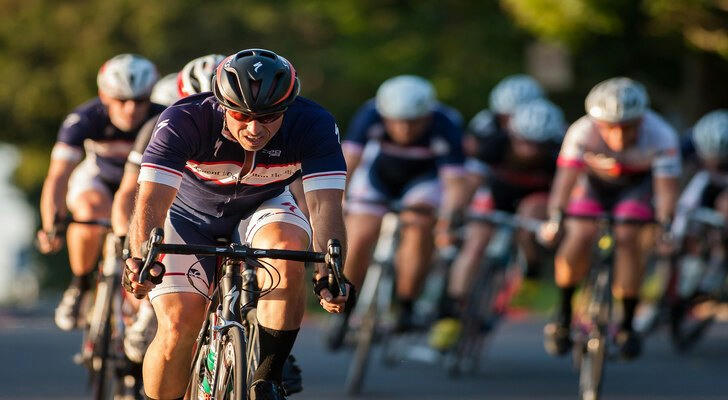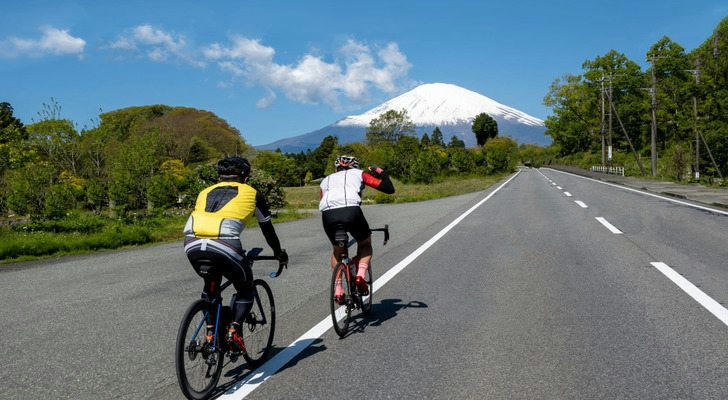How to Improve Your Cycling Speed and Endurance Through Training
Cycling is more than just pedaling—it’s about going faster, riding longer, and pushing your limits. Whether you’re preparing for a competitive race or just want to enjoy faster, longer rides, improving your speed and endurance are the keys to a better cycling experience.

1. Start with base training
Before you move on to speed training, it’s critical to build a solid endurance foundation. Base training is the foundation that helps improve endurance and prepares the body for more intense workouts.
What is base training?
Base training focuses on long, steady rides at a moderate pace. The goal is to strengthen the aerobic system, improve muscle endurance, and teach the body to burn fat as its primary source of energy.
• **How long? ** Ride 3-4 times a week for 60-90 minutes each time.
• Intensity: Ride at a speed at which you can comfortably hold a conversation—this keeps your heart rate in the optimal fat-burning range (usually around 60-70% of your maximum heart rate).
Scientific research shows that regular base training can improve endurance. In a study conducted by the Journal of Strength and Conditioning Research, athletes who performed base training showed a 20-25% improvement in endurance after a few weeks.
2. Interval training for speed
While base training can build endurance, interval training is the key to improving speed. This style of exercise involves alternating between high-intensity work and rest or low-intensity recovery. By pushing the body to perform at its maximum effort during the "on" phase, interval training can improve cardiovascular fitness and cycling speed.
The Science of Interval Training
A study published in the Journal of Sports Medicine found that just two sessions of high-intensity interval training (HIIT) per week significantly improved a cyclist's maximum oxygen uptake (VO2 max)—a key determinant of endurance. A higher VO2 max allows you to ride longer and faster without getting tired.
How to do it?
• Warm up: Start with a 10-minute easy ride to prime your muscles.
• Workout phase: Ride hard for 30 seconds to 2 minutes at 90-100% effort (you should be breathing hard).
• Recovery phase: Ride slowly or rest for 2-3 minutes.
• Repetitions: Perform 4-6 intervals, gradually increasing the number as your fitness improves.
This style of training is very effective and has been shown to improve speed and endurance.
3. Strength training: Build strength for faster sprints
Increasing your cycling speed is not only about aerobic fitness, but also about strength. Building muscle strength will help you accelerate faster and climb hills with ease. Focus on exercises that target your legs, glutes, and core, which are the main muscles used when cycling.
Key exercises include:
• Squats: Essential for building leg strength and improving pedaling power.
• Lunges: Help with balance and power transfer when pedaling.
• Planks: Strengthen your core to support better posture and stability when cycling.
• Leg Press: Great for building explosive leg strength.
Cycling-specific strength training, combined with the right intervals, can significantly improve your power output. Studies show that cyclists who add strength training to their training routines improve their sprinting and climbing abilities by 10-15%.

4. Focus on Nutrition and Hydration
Eating a balanced diet and staying hydrated can significantly improve your physical condition. Cycling is physically demanding, and fueling correctly ensures you have enough energy to ride faster and longer.
Key Nutrients:
• Carbohydrates: Cyclists’ main source of fuel. Include pasta, rice, and whole grains in your diet.
• Protein: Aids muscle recovery. Lean meats, beans, and eggs are great sources of protein.
• Fats: Healthy fats found in nuts, avocados, and olive oil provide sustained energy on long rides.
Hydration:
Dehydration can significantly reduce performance and endurance. Drink 500-700 ml of water every hour on long rides. In hot weather, consider drinking an electrolyte drink to replace the salt lost through sweating.
5. Rest and Recovery: Don’t Overtrain
Rest is often overlooked, but it’s just as important as the training itself. Overtraining can lead to burnout and injury, which will hinder long-term progress. Cycling gets better when the body recovers and adapts to the stress applied.
Recovery Tips:
• Sleep: Get 7-9 hours of sleep per night for optimal recovery.
• Active Recovery: After a hard workout, go for a low-intensity ride to help flush out lactic acidid and promote muscle repair.
• Stretching: Incorporate dynamic and static stretching post-ride to reduce muscle tightness.
Conclusion
Improving cycling speed and endurance doesn’t require magic or quick fixes. By focusing on building a strong endurance base, incorporating interval training, adding strength exercises, and fueling properly, you’ll see notable improvements over time. Remember, consistency is key. With the right approach, your cycling speed and endurance will steadily improve, and you’ll be ready to tackle longer and more challenging rides.
ncorporating interval training, adding strength exercises, and fueling properly, you’ll see notable improvements over time. Remember, consistency is key. With the right approach, your cycling speed and endurance will steadily improve, and you’ll be ready to tackle longer and more challenging rides.
